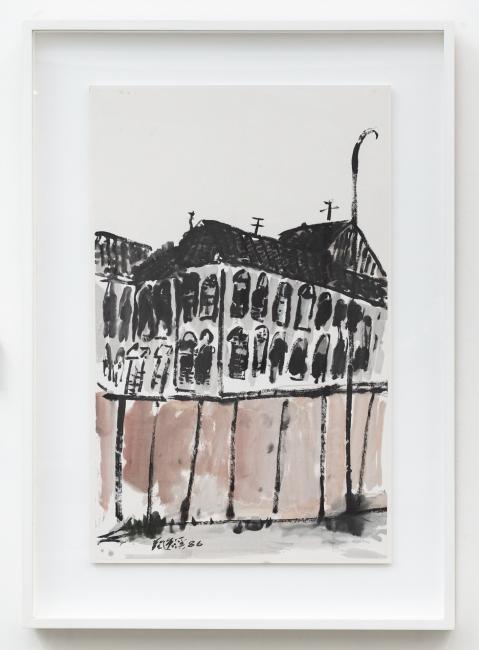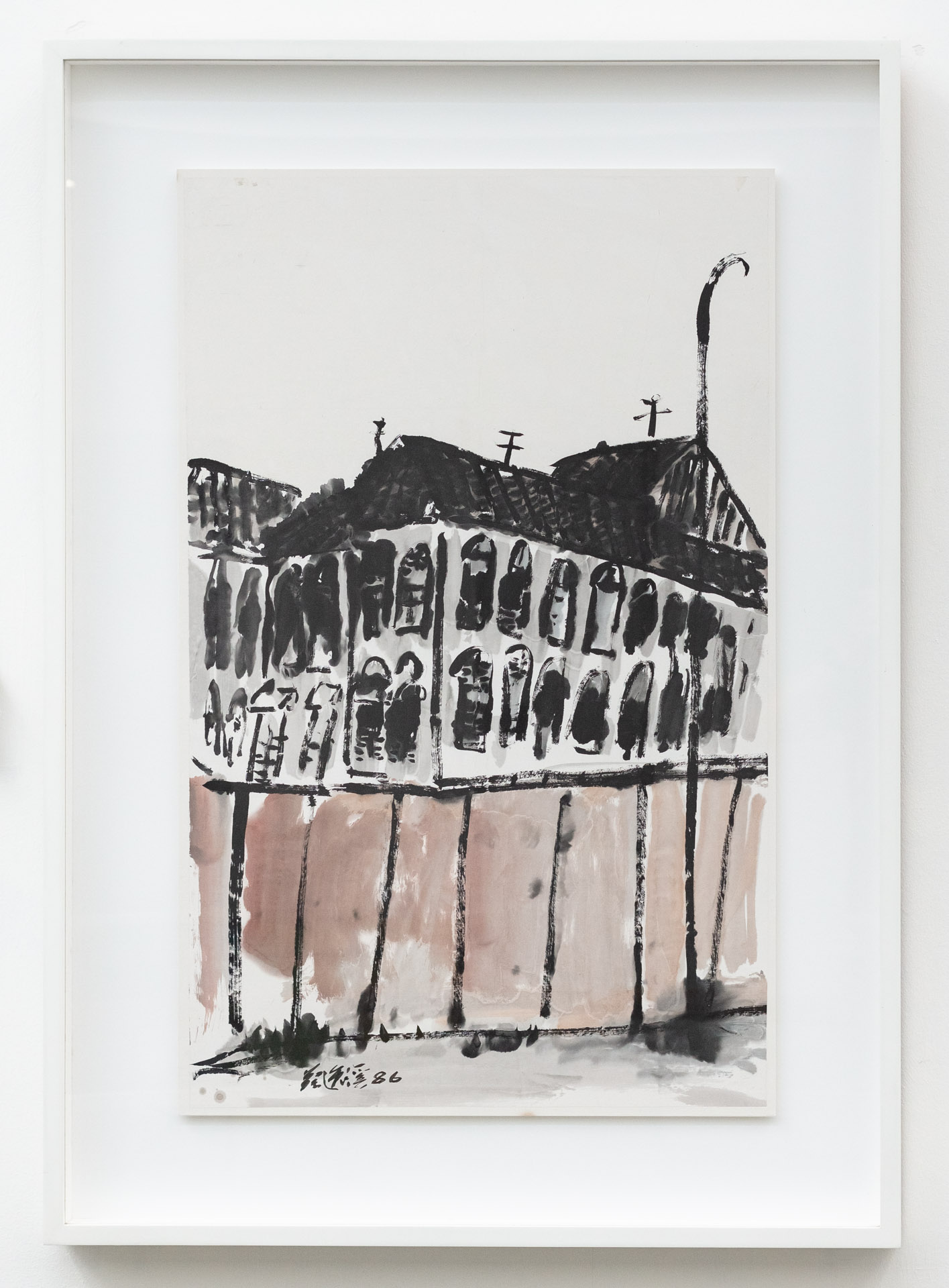Artwork Details
Hoardings around CHIJ
Credit Line: Gift of Artist 2006, Collection of SMU
This artwork is part of 25x25 Campus Art Tour.
Listen to the audio description of the artwork here.
Transcript:
In this Chinese ink painting by Chua Ek Kay, a two-storey neoclassical building stands disused behind a tall row of temporary construction hoardings. The building's gothic windows and tiled roofs are rendered in dark, sombre black strokes. The muted pink blush of the hoardings stands in contrast against the building's gloomy façade.
The empty building had been the Convent of the Holy Infant Jesus, or CHIJ for short, which was founded in 1854. The compound it was located on also had a girl's school, an orphanage, a boarding house and a chapel. In 1983, the government acquired the land for redevelopment, and the school was reallocated to Toa Payoh. In November that year, a mass was held in the chapel for the last time, after which it was deconsecrated for non-religious use.
Painted in 1986, the building deserted and awaiting its fate, the hoardings in the painting stands as a symbol of transience in Singapore's ever-changing landscape. In the years following the painting's creation, the chapel and the convent Caldwell House were declared National Monuments in 1990, while other parts of the complex were demolished. What remains of the complex is now CHJIMES, a dining and entertainment hub.
This painting is one of Ek Kay's early works from his long-running Street Scenes series. He wanted to find a subject which had personal resonance for his audience and him. And so he turned to the city centre and its shophouses which held many memories for him. His family had lived in a two-storey shophouse along Upper Serangoon Road after moving to Singapore from China in the 1950s. He was familiar with the nooks and crannies of the city because his father and uncle used to work in businesses located at Tan Quee Lan Street and Middle Road respectively. In the 1960s, he had spent six years studying at Catholic High School which was then located at Queen Street. Hence his long and enduring connection with the historic commercial centre of Singapore, even as urban redevelopment took off in the 1980s. He continued to paint Street Scenes till his death in 2008.
--
Chua Ek Kay (1947-2008) was one of Singapore's leading contemporary Chinese ink painters. Born in China, Chua came to Singapore with his family in the 1950s. Here he studied Chinese ink painting under Fan Chang Tien. In 1991, he was the first Chinese ink painter to win the United Overseas Bank Painting of the Year Award. He later took up formal training in contemporary art, receiving a Bachelor of Fine Arts from the University of Tasmania in 1994 and a Master of Arts (Honours) in Visual Arts from the University of Western Sydney in 1995. He was awarded the Cultural Medallion in 1999.
This artwork is from the Street Scenes Collection, a suite of 30 paintings donated by the artist in 2006 and currently housed at Lee Kong Chian School of Business. The Street Scenes Collection spans two decades of Chua's artistic practice, from 1986 to 2006, and pictures narrow alleyways, temples of worship, old shophouses and historic sites in Singapore, Kathmandu, Yogyakarta and Jiangnan. In later years, he was keener on evoking feelings rather than rendering actual physical architecture. Particularly, his depictions of Singapore city streets—from Little India to Ann Siang Hill—are suffused with feelings of melancholy as he captures history passing through the once-familiar streets he has seen grown, thrived, and waned over time.
Hoardings around CHIJ (1986) was done before his first solo exhibition in 1988, and is significant as an early indicator and demonstration of Chua's exploration in using Chinese ink to paint street scenes. It marked the beginning of his journey to modernise Chinese ink painting using local subject matter.

